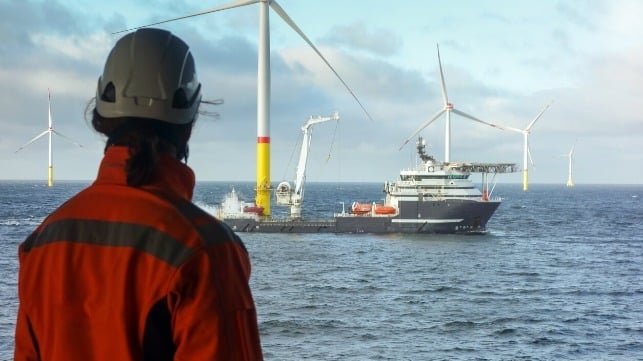“We need to see more innovation in hybrid projects to deliver the massive amount of wind energy we need to meet our climate goals.”
But the challenges are immense. To connect all the new offshore wind farms to the mainland, Europe will need to expand its electricity grids. This will require significant investment and coordination between countries. The European Network of Transmission System Operators for Electricity (ENTSOE) estimates that this will cost around €400 billion. Additionally, there are concerns about the availability of specialized vessels and skilled workers needed to build and maintain the new wind farms.
Despite these challenges, the push for offshore wind energy continues. The European Union has set ambitious targets for offshore wind capacity, with plans to install 120 GW by 2030 and even more in the following years. These projects have the potential to significantly reduce Europe’s reliance on fossil fuels and contribute to a cleaner, more sustainable energy future.
As we move forward with these projects, it is crucial that we address the logistical and operational challenges that come with such massive undertakings. By investing in infrastructure, technology, and workforce development, we can ensure that offshore wind energy becomes a reliable and cost-effective source of power for years to come.
We Need Many More to Build an Integrated Offshore Grid
Wind energy is a crucial component of the global transition to renewable energy sources. However, the development of offshore wind farms faces significant challenges, particularly in Europe. According to WindEurope, the biggest investments are required to optimize and expand national electricity grids to accommodate the growing capacity of offshore wind projects. Despite the urgency of the situation, there is no clear funding plan in place to support the necessary grid buildout.
As Roman orator Cicero once said, “If you aspire to the highest place, it is no dishonor to stop at the second, or even the third place.” In the context of offshore wind energy, Europe’s goal of installing 17.2 GW per year falls far short of the current reality of only 2.5 GW per year. This discrepancy highlights the challenges faced by the industry in scaling up production to meet ambitious targets.
Challenges of “Stop-and-Go” Policies
The issue of insufficient grid infrastructure is not unique to Europe; the United States also struggles with grid limitations that hinder the growth of wind energy capacity. In 2024, the U.S. installed just 4.2 GW of new wind energy capacity, the lowest in a decade. Policy inconsistencies, such as those seen during the Trump Administration, contribute to the stop-and-go nature of wind energy development, creating uncertainty for investors and developers.
These stop-and-go policies not only delay individual projects but also disrupt the long-term development of industrial ecosystems that support the wind energy sector. Building up these ecosystems takes time and investment, and policy shifts can have lasting effects on the industry’s ability to scale up production efficiently.
Looking Towards a Sustainable Future
While the challenges facing the offshore wind industry are significant, there is hope for a more sustainable future. By developing clear funding plans and long-term policy frameworks, both Europe and the U.S. can create a stable environment for investment in wind energy infrastructure. This will not only support the growth of offshore wind farms but also stimulate job creation and economic development in the renewable energy sector.
Ultimately, the success of offshore wind energy depends on a collaborative effort between governments, industry stakeholders, and financial institutions. By working together to address grid infrastructure challenges and policy inconsistencies, we can build an integrated offshore grid that supports the transition to a clean energy future.
As we strive to achieve ambitious renewable energy targets, it is essential to prioritize the development of offshore wind projects and the necessary grid infrastructure to support them. With the right investments and policies in place, we can pave the way for a more sustainable and resilient energy system for future generations.

